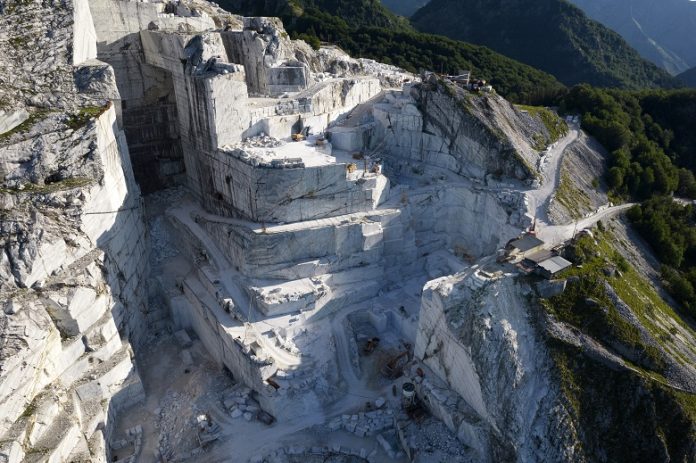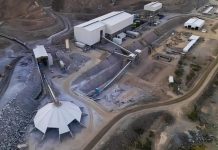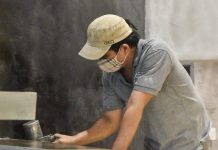Tuscan marble resists in the black year of the pandemic and while closing 2020 with a double-digit decline in the overall accounts, it presides over the reference markets and aims for consolidation in 2021. Among the companies in the district, despite the difficulties, there is a desire to grow and invest: after the Ipo of Franchi Umberto Marmi, many are looking to the financial market to find the necessary resources for expansion in a sector with a high intensity of capital.
Matteo Venturi, deputy vice president of Confindustria Livorno-Massa Carrara draws the picture: On average in 2020, stone companies lost 20 percent of revenues compared to the previous year, a trend that traces the fewer tons of blocks extracted during the lockdown: we went from 867 thousand tons in 2019 to 690 thousand in 2020 – explains Venturi – Despite this, we are satisfied because last year, at the beginning of the pandemic, we feared that the market could go even worse than this. And we are deeply proud of having kept the employment levels of the sector intact: not just an operation due to the blocking of layoffs, but our strategic interest in safeguarding a skilled workforce unique in the world.
Already in the third quarter of last year, the stone sector began a slight recovery in the first six months, recording an overall decline of 28.8 percent which in values meant 293 million in revenues compared to 411 million in the same period of 2019. . The greatest decrease was recorded in the unprocessed materials component with a minus 42.7 per cent (against an Italian average of minus 29 per cent) and mainly attributable to the Chinese market which dropped from 99 million euros to 53. suffered a decline of 19.2 per cent (Italian average minus 14.2 per cent), recording the most significant loss on the US market (around 15 million euros less), on that of the Arab Emirates and Kuwait, in part offset by the increase recorded for Saudi Arabia which went from 7 to 20 million. The estimates for the end of the year, says Venturi, are around a minus 15 percent compared to a market that has lost 20 percent on average: we have resisted and especially when companies close their 2020 budgets there will be many surprises because many will have positive numbers, thanks to the investments in digital technologies launched in the two-year period 2018-2019 which have borne fruit with the explosion of the pandemic.
The marble market traditionally driven by exports because it serves luxury from all over the world: only those who had already begun to focus on virtual warehouses, visits to the company with Google Street View and even on digital samples obtained by submitting scanned marble blocks that show the characteristics of the blocks to customers connected remotely by simulating an evaluation in the presence of unprocessed material. Marble is an extremely expensive commodity and blocks can always hide some imperfections: this is why visits to the factories by Chinese, American, Indian, Arab customers who want to literally touch the goods to determine their value have always been considered irreplaceable. Until 2020 when the most innovative companies managed to replicate them, at least partially, with sophisticated digital tools: this was the key to keep continuing selling, even during the lockdown, when it was not possible to quarry marble but to market it. In 2020, the Carrara stone district changed its skin once again, leaving operators with the feeling of a historical turning point. At first, blocks of marble were simply sold here, then the slabs were sold, then it was the turn of the creation of showrooms to welcome customers away from the dust of the quarries. Now the latest leap in immersive technology that simulates reality, the last great revolution in the world of marble, comparable to that initiated by Bernardo Caprotti (owner of Esselunga) by importing the model of large-scale distribution into Italy from the United States, supermarkets that began to replace the shops in our cities, from quarrymen and producers of unprocessed materials today we have become luxury technological boutiques open to the world, explains the vice president of Confindustria Livorno-Massa Carrara. The last quarter of last year showed that the Chinese market is recovering, while signs of contraction are coming from the United States, like a slowing locomotive. For 2021 we do not expect major revolutions, our retention expectation compared to the results of 2020.
Resilient to the shock wave of the crisis, with several companies that outperformed the market and closed 2020 with better results than the previous year, the stone district wants to grow and look forward. There are many companies that are watching with interest in the capital market to find resources to invest without resorting only to debt leverage – concludes Venturi – The stock market is a good option for a sector that requires large risk capital both to start new crops and for the machinery necessary for extraction and marble processing.
Source: laveritaeradigitale.it





































